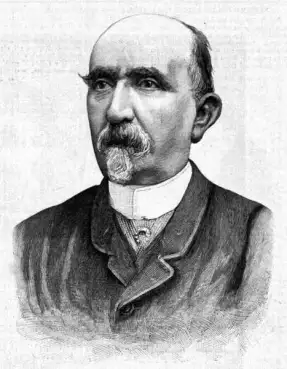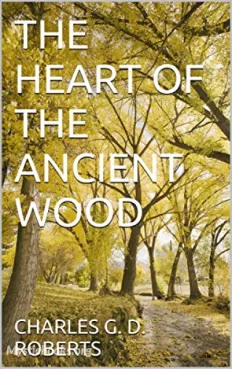
The Adventures of Pinocchio
'The Adventures of Pinocchio' Summary
The story begins in Tuscany, Italy. A carpenter named Master Antonio, but whom everyone calls Master Cherry, has found a block of wood which he plans to carve into a leg for his table. When he begins, however, the log shouts out. Frightened by the talking log, Master Cherry gives it to his neighbor Geppetto, an extremely poor man who plans to make a living as a puppeteer in hopes of earning "a crust of bread and a glass of wine".
Geppetto carves the block into a boy and names him "Pinocchio". As soon as Pinocchio's nose has been carved, it begins to grow with his congenital impudence. Before he is even built, Pinocchio already has a mischievous attitude; no sooner than Geppetto is finished carving Pinocchio's feet does the puppet proceed to kick him. Once the puppet has been finished and Geppetto teaches him to walk, Pinocchio runs out the door and away into the town. He is caught by a Carabiniere, who assumes Pinocchio has been mistreated and imprisons Geppetto.
Left alone, Pinocchio heads back to Geppetto's house to get something to eat. Once he arrives at home, a talking cricket who has lived in the house for over a century warns him of the perils of disobedience and hedonism. In retaliation, Pinocchio throws a hammer at the cricket, more accurately than he intended to, and accidentally kills it.
Pinocchio gets hungry and tries to fry an egg, but what comes out of it is a little bird that flies out the window forcing Pinocchio to leave the house to ask for food. Then he knocks on an old man's door to ask for food. The man thinking that Pinocchio was one of the hooligans who ring the bells for fun, and instead of giving a good piece of bread all he gets is a bucket of cold water on his head. Wet Pinocchio comes home and lies down on a stove, but the next day when he wakes up he falls to the ground with burned feet. Luckily, Geppetto is released from prison and makes Pinocchio a new pair of feet. In gratitude, he promises to attend school, and Geppetto sells his only coat to buy him a school book.
On his way to school the next morning, Pinocchio encounters the Great Marionette Theatre, and he sells his school book in order to buy a ticket for the show. During the performance, the puppets Harlequin, Pulcinella and Signora Rosaura on stage recognize him in the audience and call out to him, angering the puppet master Mangiafuoco. Upset, he breaks up the excitement and decides to use Pinocchio as firewood to cook his lamb dinner. After Pinocchio pleads to be saved, Mangiafuoco gives in and decides to burn Harlequin. After Pinocchio pleads for Harlequin's salvation, Mangiafuoco gives up. When he learns about Pinocchio's poor father, he ultimately releases him and gives him five gold pieces to give to Geppetto.
Book Details
Language
EnglishOriginal Language
ItalianPublished In
1883Genre/Category
Tags/Keywords
Authors

Carlo Collodi
Italy
Carlo Lorenzini (24 November 1826 – 26 October 1890), better known by the pen name Carlo Collodi , was an Italian author, humourist, and journalist, widel...
Books by Carlo CollodiDownload eBooks
Listen/Download Audiobook
Related books

Poppy's Presents by Mrs. O. F. Walton
Poppy's Presents is a children's story that explores the themes of material possessions and the true meaning of happiness. Poppy, a young girl, eager...

The Jumping Kangaroo and the Apple Butter Cat by John Walker Harrington
"Embark on a whimsical adventure where a jumping kangaroo and an apple butter cat come together in a delightful tale of friendship and mischief. Join...

Rover Vol. 01 No. 25 by Lawrence Labree
The Rover was a weekly magazine of original tales, poetry, and engravings. Edited by Seba Smith and Lawrence Labree, it aimed for a high standard in i...

The Heart of the Ancient Wood by Sir Charles G. D. Roberts
This is a captivating book that transports readers into a world of enchantment and wonder within the depths of a timeless forest. This mesmerizing pie...

Rover Vol. 01 No. 20 by Lawrence Labree
The Rover was a weekly magazine published in the United States from 1843 to 1848. It featured a mix of original and selected short stories, poems, and...

The Dream of the Red Chamber by Xueqin Cao
The Dream of the Red Chamber (also known as The Story of the Stone) is one of the Four Great Classical Novels of China, and considered the greatest of...

Children's Classics in Dramatic Form by Augusta Stevenson
This book is a collection of classic children's stories adapted into short plays by Augusta Stevenson. The stories, drawn from the works of the Brothe...

English Fairy Tales by Flora Annie Steel
This collection of English fairy tales includes well-known stories like Jack and the Beanstalk and Little Red Riding Hood, as well as lesser-known tal...

Taten des Großen Alexander by Michail Alexejewitsch Kusmin
Das Buch "Taten des Großen Alexander" von Michail Alexejewitsch Kusmin erzählt die Geschichte des Lebens Alexanders des Großen. Es verwebt biografisch...

Ben Pepper by Margaret Sidney
Ben Pepper is a heartwarming and nostalgic tale of a young boy's adventures and the power of family. It follows Ben as he navigates the challenges and...
Reviews for The Adventures of Pinocchio
No reviews posted or approved, yet...